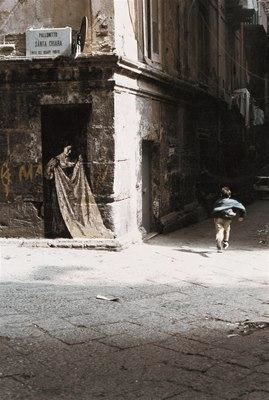Ernest Pignon-Ernest
For now more than thirty years, Ernest Pignon-Ernest covers the city walls with his images.
His powerfull drawings of ample lay out bring back to the surface traces of a history, of a burried past, of a hidden topic that crash with the contemporary world, the every day life.
sovereign, his series are declinable depending on places and themes: South Africa andAIDS вҖ” Rimbaud (Paris & Charleville-MГ©ziГЁres, 1978-1979) вҖ” the call-box and the homeless (behind the glass, 1997-1999) вҖ” Jean Genet (Brest, 2006) вҖ” Naples and Caravaggio (Naples, 1988 вҖ” 1995).
Ephemeral by essence, those city walls fitting up naturally drove the artist to photography for information and evidence of his work.
First a document ,little by little, the photography became a work of art of itвҖҷs own right.
So the artist, who meets photography incidentally, will then practise it as a вҖң famous amateurвҖқ before seizing it thoroughly to make it the centre piece of his work.

Recommended for you
For now more than thirty years, Ernest Pignon-Ernest covers the city walls with his images.
His powerfull drawings of ample lay out bring back to the surface traces of a history, of a burried past, of a hidden topic that crash with the contemporary world, the every day life.
sovereign, his series are declinable depending on places and themes: South Africa andAIDS вҖ” Rimbaud (Paris & Charleville-MГ©ziГЁres, 1978-1979) вҖ” the call-box and the homeless (behind the glass, 1997-1999) вҖ” Jean Genet (Brest, 2006) вҖ” Naples and Caravaggio (Naples, 1988 вҖ” 1995).
Ephemeral by essence, those city walls fitting up naturally drove the artist to photography for information and evidence of his work.
First a document ,little by little, the photography became a work of art of itвҖҷs own right.
So the artist, who meets photography incidentally, will then practise it as a вҖң famous amateurвҖқ before seizing it thoroughly to make it the centre piece of his work.















